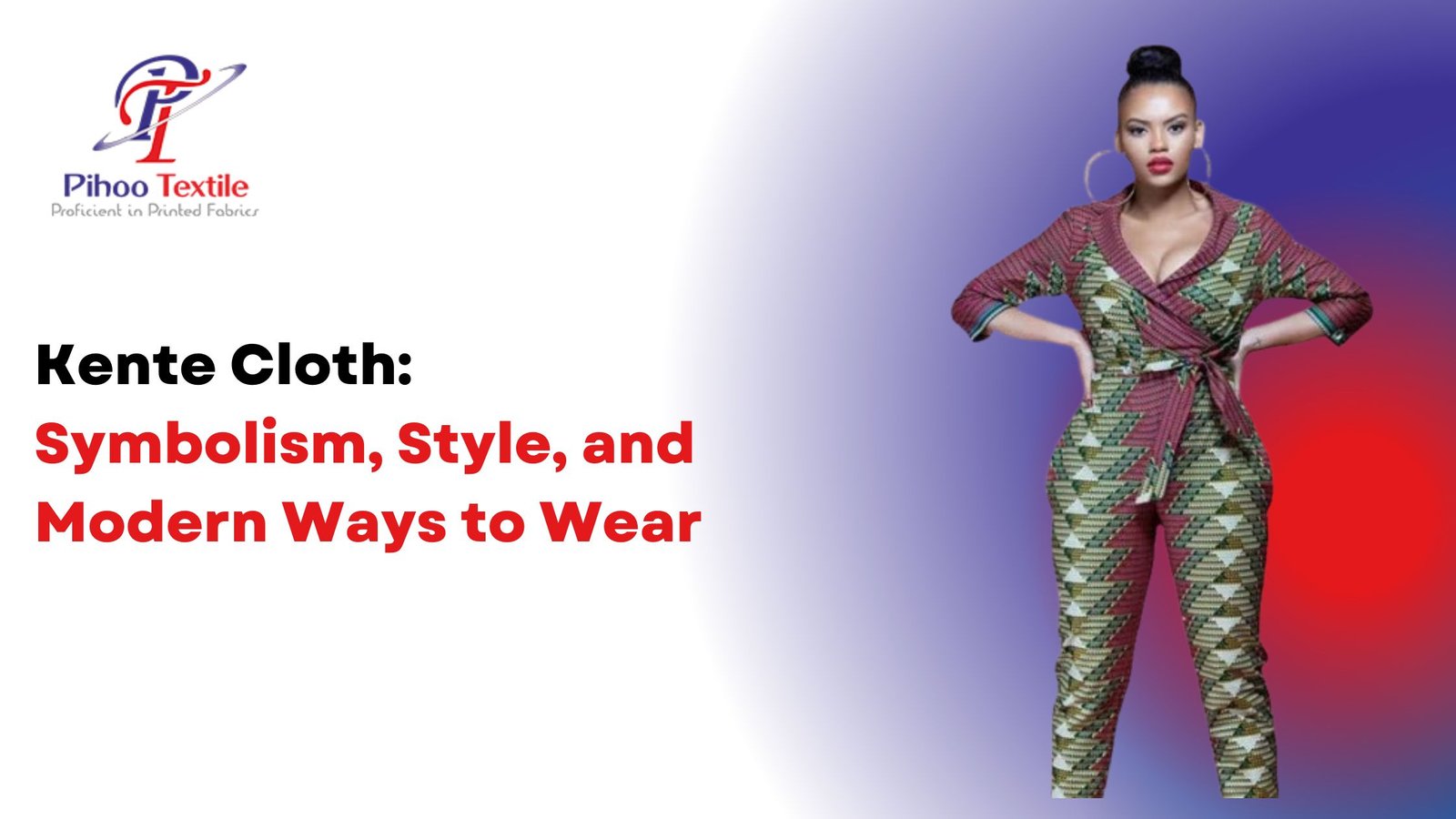Kente Cloth: Symbolism, Style, and Modern Ways to Wear
Most people see Kente and think of “colorful African fabric.” They miss the deeper truth. Each color carries meaning, every pattern tells a story, and the cloth itself represents hundreds of years of cultural significance woven into silk and cotton.
Kente originated with the Asante people of Ghana, inspired by a spider’s web according to legend. What started as royal-only cloth now appears in graduation ceremonies, fashion runways, and wardrobes worldwide. But here’s what surprises most buyers: over 350 distinct patterns exist, each named and symbolically loaded with proverbs, historical events, or social values.
This guide breaks down Kente’s color symbolism, traditional significance, and practical modern styling approaches. You’ll learn what authentic Kente looks like, how to wear it without cultural missteps, and why certain colors matter more than others.
Understanding Kente Color Symbolism
Core Color Meanings
Black holds the most significance in Kente weaving. It represents spiritual strength, maturity, and intensified spiritual energy. Every authentic Kente piece incorporates black as a foundational element.
Gold or yellow signals wealth, royalty, and status. The silk fibers traditionally used in Kente hold these dyes particularly well, creating the vibrant shine associated with high-quality cloth.
Red symbolizes blood, political passion, and spiritual strength. Green means growth, harvest, and renewal. Blue stands for peace, love, and harmony.
Secondary Symbolic Colors
White represents purity, cleansing rites, and festive occasions. Purple or maroon connects to Mother Earth, healing, and protection from evil. These colors combine in patterns that communicate specific messages about the wearer’s values, clan affiliation, or social standing.
The interplay between colors creates narrative depth. A cloth heavy in gold and black signals different intentions than one dominated by blue and green.
Traditional Significance and Heritage
Kente began as exclusive royal fabric worn only by Asante kings, queens, and high-status figures during sacred ceremonies. The cloth’s use carried strict social protocols. Commoners couldn’t wear certain patterns reserved for royalty.
Pattern names reflect this heritage. “Adwinasa” literally means “all motifs are used up”—a cloth so complex it exhausted every known weaving technique to please the Asantehene. It symbolizes royalty, creative ingenuity, and superior craftsmanship.
“Obaakofo Mmu Man” translates to “one person does not rule a nation.” This pattern celebrates participatory democracy and warns against autocratic rule through its design. Here’s the uncomfortable truth: many wearers don’t know what their chosen patterns communicate.
The weaving process itself requires mastery. Artisans work on narrow horizontal looms, creating strips about four inches wide that get sewn together edge to edge. Each strip demonstrates technical skill passed down through generations.
Traditional Ways to Wear Kente
Men traditionally drape Kente over one shoulder in a toga-like style that emphasizes the intricate patterns and color work. This method showcases the full design while allowing movement.
Women wear Kente as complete outfits—blouses paired with wrap-around skirts. Some styles involve wrapping the cloth around the body in specific configurations that signal social status or occasion.
These traditional methods respect the cloth’s origins and highlight the artistry involved in its creation. The draping techniques evolved over centuries to maximize visual impact.
Modern Styling Approaches
Tailored Contemporary Pieces
Kente adapts well to modern tailoring. Designers cut the fabric into jackets, dresses, trousers, and sweaters that blend African heritage with current fashion trends. A Kente blazer paired with neutral trousers creates professional wear with cultural weight.
The key to wearing tailored Kente pieces: balance the bold patterns with solid colors. A Kente dress works best with minimal accessories in neutral tones.
Accessories That Work
Kente accessories offer entry points for those hesitant about full garments. Scarves, bags, ties, bow ties, and shoes incorporate the fabric without overwhelming an outfit. A Kente clutch adds cultural flair to formal events. Kente-patterned earrings or necklaces transform simple outfits into statement looks.
Shoes with Kente patterns—sandals, trainers, heels—bridge traditional and modern fashion effectively. They work for both casual and semi-formal settings.
Men gain sophistication through Kente ties and bow ties paired with crisp shirts and tailored blazers. This approach introduces cultural elements into professional environments.
Styling Tips for Everyday Wear
Pair Kente accessories with monochrome outfits to let the patterns dominate. A white jumpsuit with a Kente belt creates striking visual contrast. Use Kente scarves as belts or tie them around handbag handles for subtle cultural nods.
For casual looks, Kente flats or trainers with jeans and plain tops provide relaxed yet intentional style. The fabric’s vibrancy stands out best against neutral backgrounds.
Identifying Authentic Kente
Authentic Kente uses silk and cotton fibers woven on traditional looms. Silk gives the cloth its characteristic sheen and vibrant coloration. Cotton makes it more comfortable and accessible.
Check for hand-woven strips sewn together—this indicates traditional production methods. Mass-produced prints lack the texture and depth of genuine woven Kente. The fabric should feel substantial, not thin or synthetic.
Look for named patterns with documented meanings. Over 350 authentic patterns exist, each carrying specific symbolism. Vendors selling genuine Kente should know their patterns’ names and significance.
Cultural Considerations
Kente carries deep cultural meaning beyond fashion. Each design represents virtues, proverbs, or significant historical events. Wearing Kente without understanding its symbolism treats complex cultural heritage as decoration.
In the African diaspora, Kente represents connection to roots and overcoming struggle. Academic institutions incorporate Kente stoles into graduation ceremonies, signifying accomplishment and cultural pride.
Respect the cloth by learning what your chosen patterns communicate. This knowledge enriches your wearing experience and honors the artisans who create it.
Conclusion
Kente offers more than visual appeal. The colors convey specific meanings, patterns tell stories, and wearing it connects you to centuries of cultural heritage. Choose authentic woven cloth, learn your pattern’s significance, and style it with intention.
Pihoo Textile supplies authentic Kente cloth with traditional weaving techniques and documented pattern meanings. Our collection includes both ceremonial and contemporary designs suitable for modern styling. Visit pihootextile.com to explore genuine Kente fabrics, request pattern information, or place custom orders. Wear cloth that carries real cultural weight and craftsmanship.


